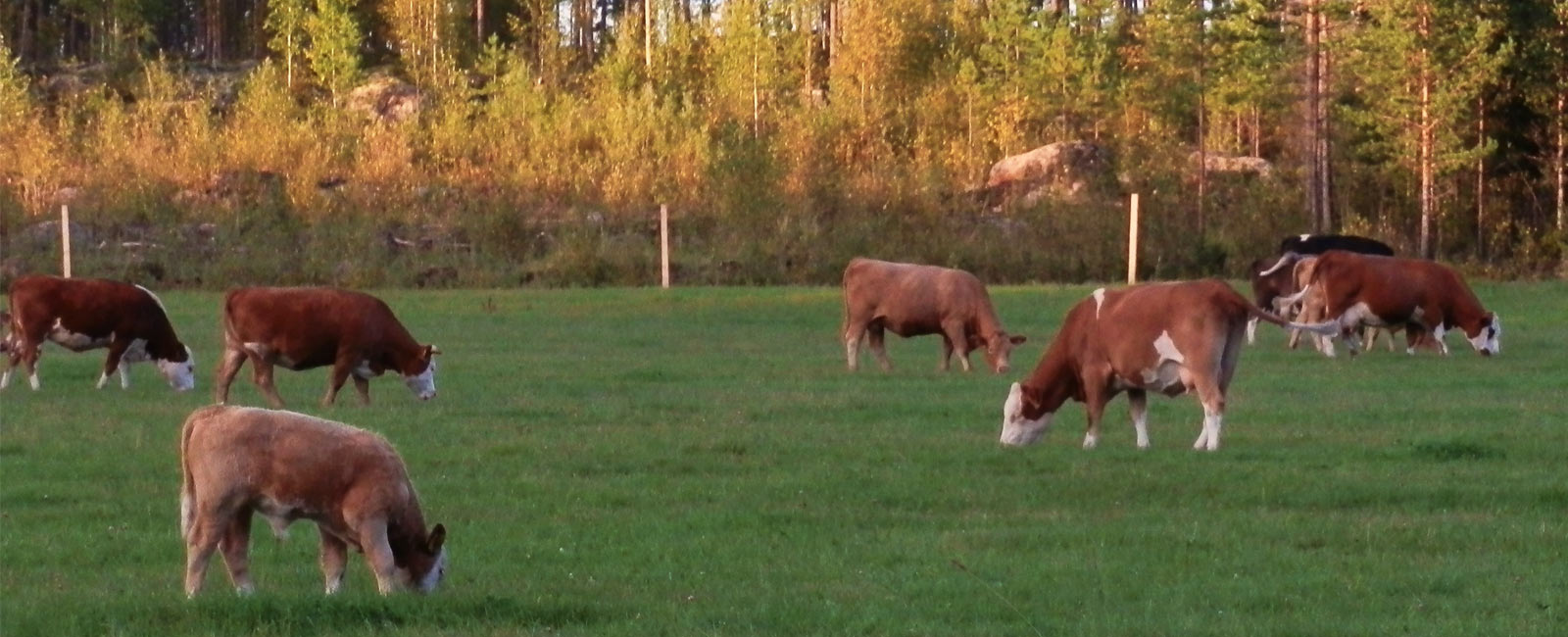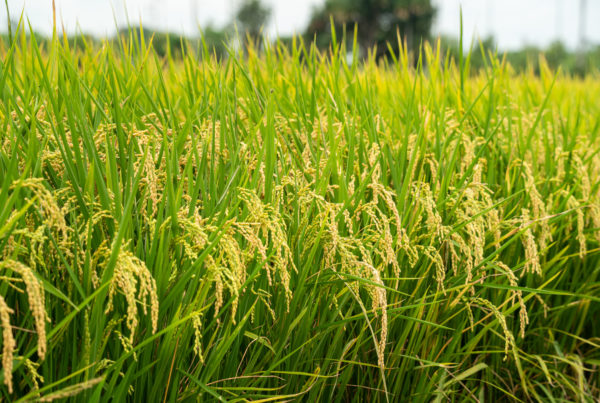Silicon Valley meats Hollywood – That is the best description of how we will get food in the future if we believe the impressive number of food tech start-ups which would like to produce food without soil or animals. But few of them deliver on their exaggerated promises.
There is no doubt that technology has improved life for huge numbers of people. Plant and animal breeding have given us a variety of useful crops and livestock products. Mechanical devices and tractors have made farming a lot easier. Food processing methods have made food safer to eat and sometimes tastier (e.g. cheese). Sometimes, innovations have improved nutritional quality and the environment, but probably more often not. It would be no exaggeration, and should not come as a surprise that many of the technological advances also have had a down-side. After all, it is not surprising in a world where profitability and increasing human labour productivity are the main drivers for technological change, that nature and sometimes human health has suffered.
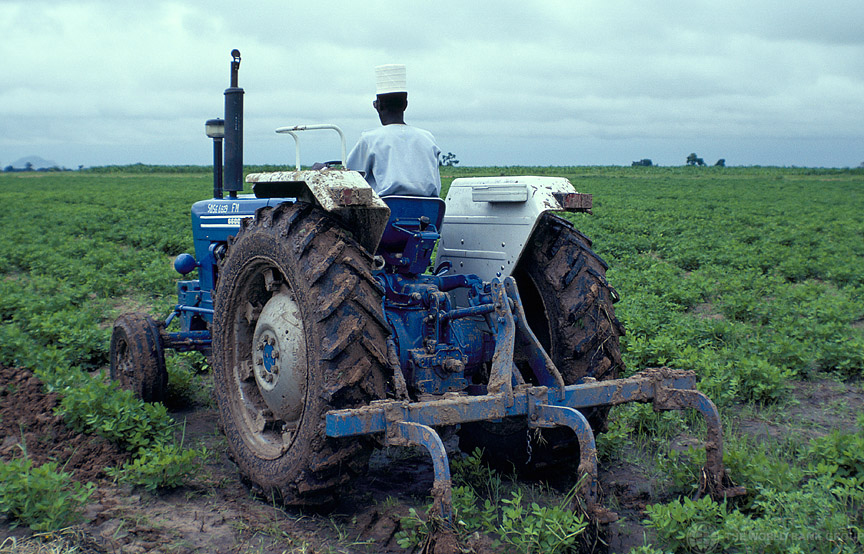
A man in Nigeria using a tractor to till the field © Yosef
Because of how badly we humans have treated soils and animals, it is understandable that people now are looking for other ways of producing food. Under banners of digital ecosystems, open source, individual foods, actionable intelligence, disruptive food systems and digital transformation, there are legions of entrepreneurs (mostly with a background in the IT sector) seeking venture capital, and researchers looking for grants.
We read articles in magazines or books which are claiming that some new technology will save the world’s poor or hungry, produce food with almost no environmental impact, or make cities independent on that boring “junk space” called countryside. For example, Jayson Lusk, a food and agriculture economist at Oklahoma State University, presents in his new book, Unnaturally Delicious: How Science and Technology Are Serving Up Super Foods to Save the World, how 3-D food printing, robot cooks, synthetic biology, and meat tissue culture will revolutionize our food.
3-D printing of food is expensive, incredibly slow and not capable of making most of the food we like to eat – today. Perhaps it will in the future. My concern is rather that 3-D printing of food and robocooks seem to be far-fetched solutions to marginal problems, and it certainly has nothing to do with “solving the world’s largest food and farming problems”, as the jacket of the book claims. Many tend to forget that 3-D printing of food is not really producing nutrients; it is just a new way of distribution and cooking individualized meals.
Most of the new food tech start-ups are actually about distribution and not about production. And it is probably in the field of distribution that food tech will be most successful, and also have a disruptive influence. In the food industry, like ever before, there is a lot of innovation. Many different kinds of vegetarian or vegan alternatives to meat, milk, and cheese have developed.
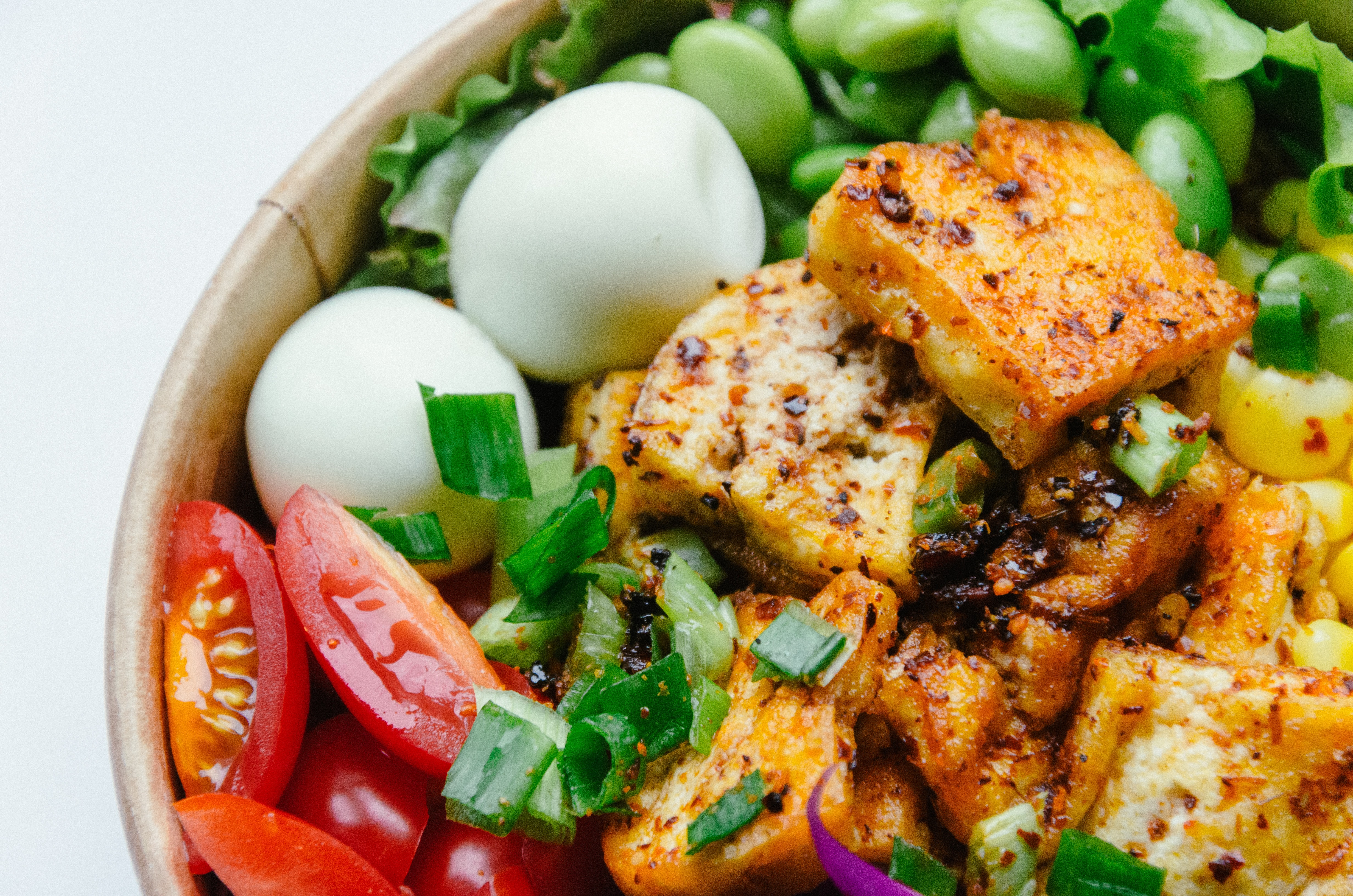
Tofu is one of the alternatives to meat that is consumed © Photo by Anh Nguyen
But in principle, there is not much new in this. Tofu has been around for two thousand years; fried potato cakes have been common in many cultures, and tempeh in others. An interesting perspective of the food industries’ interest in vegan food and other “free from foods” is that it has wonderful margins. A survey in Swedish supermarkets reveals that conventional soy protein products regularly have a much higher price than organic minced meat, despite one tenth of the costs being for raw materials.[1] The food industry can thus capture a share of the market price which earlier went to farmers.
On the farm level, more and more new technologies are introduced. Milk robots have been around for decades and soon there will be weeding robots. GPS control of tractors reduce wasteful driving and enables a more precise application of fertilizers. Self-driving tractors are close to market introduction. All of these technologies are about fine-tuning the use of resources or saving labour in agriculture operations and don’t represent any new ways of producing food.
In this article, however, I turn my attention to methods of primary production which are not soil or animal based (I will leave wild foods and fisheries outside of the discussion). Many such ideas abound; synthetic food, algae, aquaculture, hydroponics, insects, vertical farms, and urban farming are the ones I will discuss here.
In 2013, Mark Post at the Maastricht University, sponsored by Google co-funder Sergey Brin to the tune of US$300,000, presented the first synthetic hamburger to the world’s media.[2] An American company, Memphis Meats, announced in March 2017 that it could produce cell cultured chicken meat for about $9,000 per pound.[3] Even if the companies claim they are close to having marketable products there are big question marks if these efforts will be scalable and commercially viable, if ever.
Growing food in large tanks has been done for a long time, however. Yeast biomass was used as human food in Germany already during the First World War. The development of large-scale processes for the production of commercial protein began in earnest in the late 1960s, against the backdrop of an assumed food crisis. Most of the initiatives failed due to technical reasons, but the ICI Pruteen process for producing bacterial single cell protein for animal feed succeeded.[4]
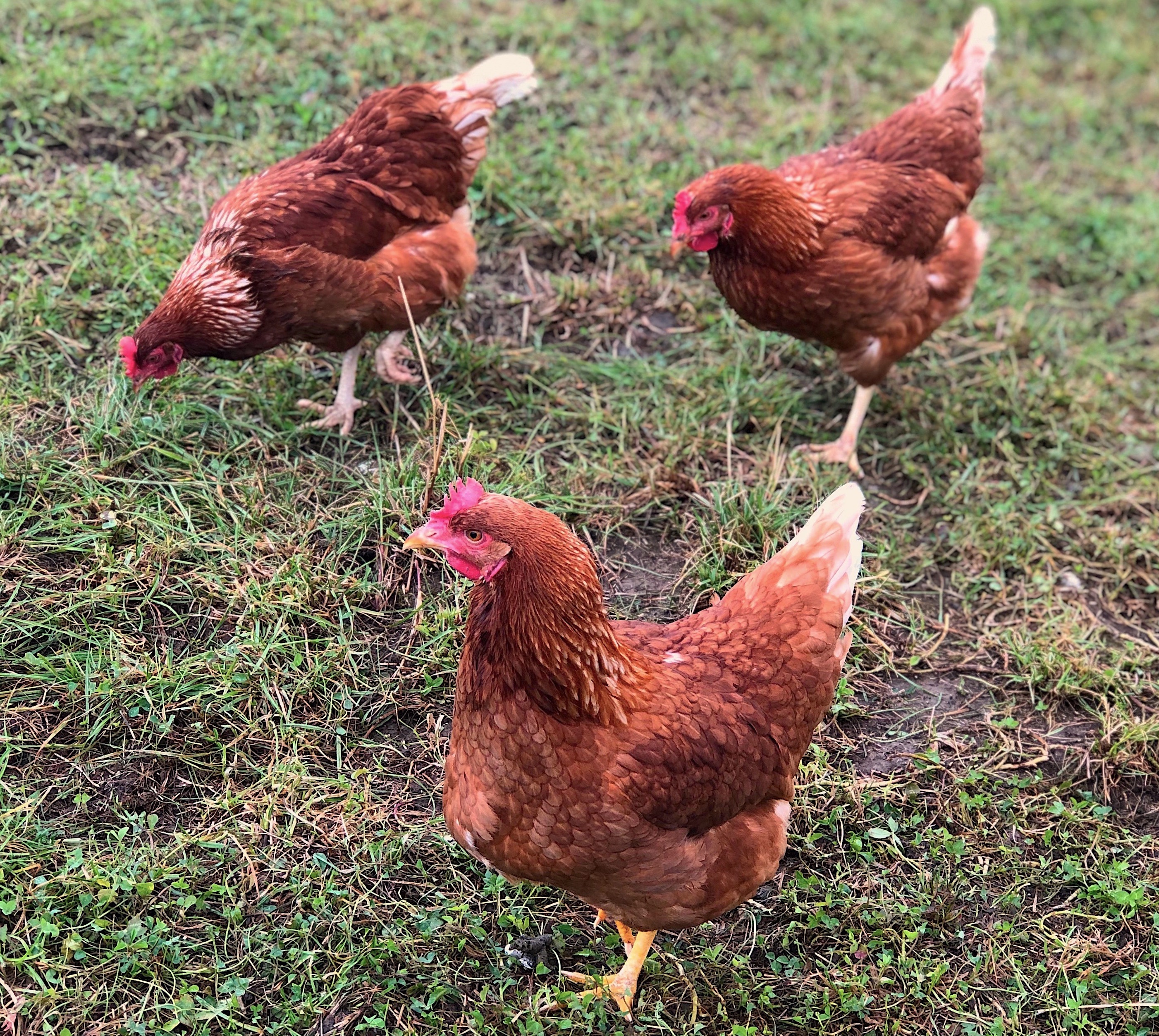
In many parts of the world, organic methods of chicken rearing is not a reality © Foto Sauno
However, even if the production worked it was never economically viable – it could simply not compete with soy and fish, and the site was eventually demolished. On the same site in Billingham, England there is now a smaller factory that uses a continuous fermentation process to produce a Fusarium venenatum biomass, marketed as Quorn, a vegetarian alternative to meat, with a price higher than meat.
Few people seem to realize that lab-foods also need a feedstock, and the companies marketing the products are mostly silent regarding the raw materials used. To grow maize as a feedstock for ‘artificial’ food or to produce chicken is not so very different. Chicken production, in many parts of the world, is already landless production; a kind of feed converter factory. And it is obvious that you can do a similar thing with fungi or bacteria. It is not obvious, however, that the process will be much more efficient (but possibly more ethically acceptable). Judging from the prices of the synthetic meat products, considerable resources are used in their production. Tissue culture of beef is currently done on a serum extracted from unborn calves and it also involves the use of antibiotics.[5] Other resource demands are rarely documented, so the claims of being resource efficient still needs to be proven.
Aquaculture of fish, shellfish, aquatic plants, and algae is increasing and will continue to do so. Aquaculture can capture nutrients that are lost from the soil and carried to the sea by sewage and recycle them into the food system, for example, by cultivating mussels or growing macroalgae. Microalgae can be eaten, but can also be used as a fertilizer or feed for animals. The difficulty is to find practical ways to grow them.
As Algae Industry Magazine (2012) notes: “Though the cultivation of algae using man-made or natural ponds was initially simple, turning it into a viable feedstock has always been problematic. So our industry has always needed a system that could enable higher production levels, lower capital and operating costs, greater biomass density, better environmental control, and above all, industrial scalability.”[6]
Even bio-fuels could be made from algae, but the cost of production is prohibitive and would use enormous areas and water resources. In addition, it is very energy consuming and CO2 emissions caused would be much bigger than for fossil fuels.[7] Therefore, almost all algae entrepreneurs are producing nutritional supplements and other specialty products which have prices that are two orders of magnitude higher than fuel or staple food.
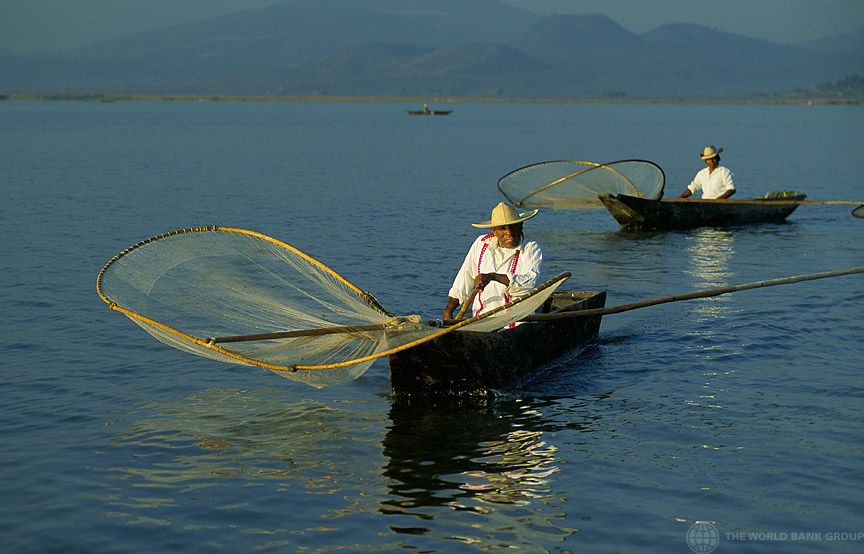
Fishermen in their boats trying to catch fish in Mexico © Curt Carnemark
Much aquaculture today is based on predatory fish, such as salmon, which are fed on undersized caught wild fish, other fish leftovers, and fodder from agriculture. There is not a dramatic difference between modern fish farming and broiler production. Both are based on keeping a population in a confined space, feeding them with bought-in feed composed of maize, soy, and fish;[8] and adding minerals, vitamins, and antibiotics to keep them alive in a stressful environment. A comparison between Norwegian salmon production and chicken production concluded that chicken production was less-resource consuming than salmon when the salmon is fed wild caught fish.[9]
For aquaculture to really play a meaningful role in feeding a growing population in a sustainable way, we need systems that integrate aquaculture and farming. Such systems have developed over a long time in Asia where rice, fish, and vegetables have been grown in the same system, sometimes also including ducks or pigs. There are also modern versions of such systems under development.
Since 2003, FAO has promoted insect rearing. More than 1,900 species have been consumed in the world, most of them wildly collected.[10] Various waste materials, including manure and our own faeces can be used as feed stock for insects. However, if insects were to become a big part of the food system they would certainly have to be raised on cultivated crops. Then we should ask if they are more efficient than chicken or carp in converting food crops into new food. Energy requirements are high and feed conversion rates are quite similar to chicken.[11] The cost of production is currently far too high and while FAO promotes insect rearing as an interesting option for small scale production, they also advocate increased mechanization to drive down costs, which will not favour small scale production; rather the opposite. [12]
The growing of plants in water with drip-fed nutrition is another much-hyped technology. There are some traditional hydrocultural systems that work well; where people farm on floats in rivers or lakes, e.g. in Bangladesh and Burma, and of course there are edible aquatic plants which are grown or collected. In its modern scientific form, hydroponics was developed by researchers at Berkeley University in the 1930s.[13] In 1937, Time Magazine reported that hydroponics had “yielded some remarkable results”.[14] Seventy two years later, the same magazine elected a vertical hydroponic system to one of the 50 best innovations in 2009.
An extreme version of hydroponics are indoor vertical farms in cities. We see sketches of green skyscrapers feeding the people with clean, local, and nutritious food. Most such plans remain on the drawing boards for very simple reasons. For sure, it is possible to produce lettuce in high towers with automated systems. But the fact that it is possible doesn’t mean it is viable on a larger scale, and even less that it will take place in the cities.
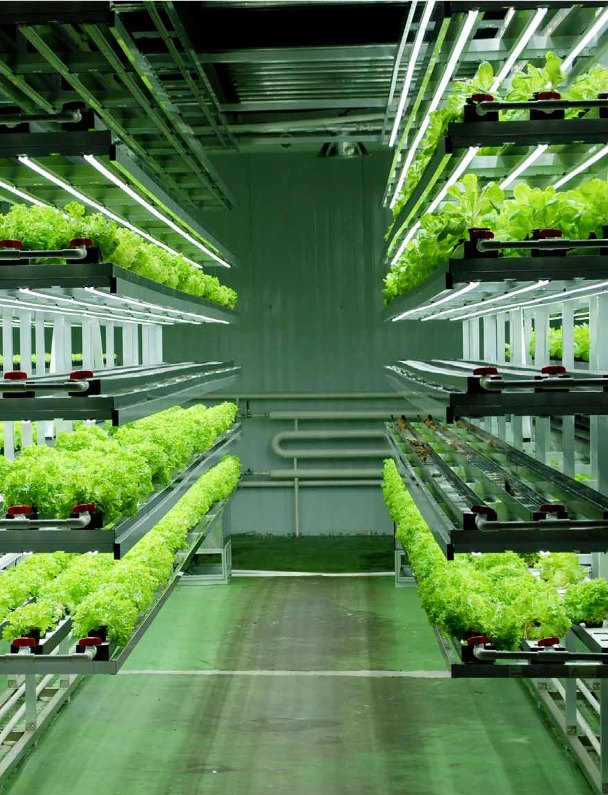
Vertical farming in Mongolia © Gunnar Rundgren
Vertical hydroponic farms are totally dependent on inputs that will need to be transported in; they are not part of any ecological context in the city. And if they are large, the crops will be put into the normal food distribution networks. In that sense, they are like any other assembly plant. And, like any other assembly plants, they are better located outside of city centres. But the rational for stacking crops on top of each other is gone where land prices are lower. Hydroponics is already, since decades, the dominating form for commercial production of tomatoes, capsicums, cucumber, and lettuce in greenhouses in many countries in the world. By and large, it can only compete in high value crops where production is close to the market, and greenhouses are often located close to transportation hubs or energy resources rather than in cities.
It can of course be a marketing gimmick for a supermarket to grow its own lettuce on the roof of the outlet or in a green dome inside the shop, in the same way as they have an in-house bakery. And, similarly, it can be an interesting architectural and engineering challenge to have green skyscrapers, and it can increase the commercial value of the property. But it has little relevance for feeding the population, which is underscored by the commercial application that are all about growing baby lettuce, pak choi or herbs, crops which provide almost no food energy or proteins.
The claims of environmental benefits are mostly not backed by any facts. In-door production of lettuce, herbs, and other small leaves require in the range of 250 Watt per square meter of energy efficient LED lamps (a lot more is required for the production of tomatoes or potatoes).[15] With 12 hours light per day one would need 3,000 Wh per square meter and day, or 1,095 kWh per year. This means that only three square meters of such a farm would consume the global average per capita use of electricity.[16] LED lit vertical farming also doesn’t save land as it often claims.
Assuming, optimistically, that we could produce the electricity with solar panels, depending on where we are located we would need solar panels on an area which would be between 4 and 8 times bigger than the area of each layer of cultivation.[17] And this is only for the light. In addition to light one needs energy for ventilation, cooling, water pumping and purification etc. The claim that the production is climate-smart is also questionable; T. Shiina and colleagues (2012) found that growing lettuce with artificial light causes at least 6 kg CO2 emissions per kg, which is considerably more than for common greenhouse production and at least five times more than arable lettuce production.[18]
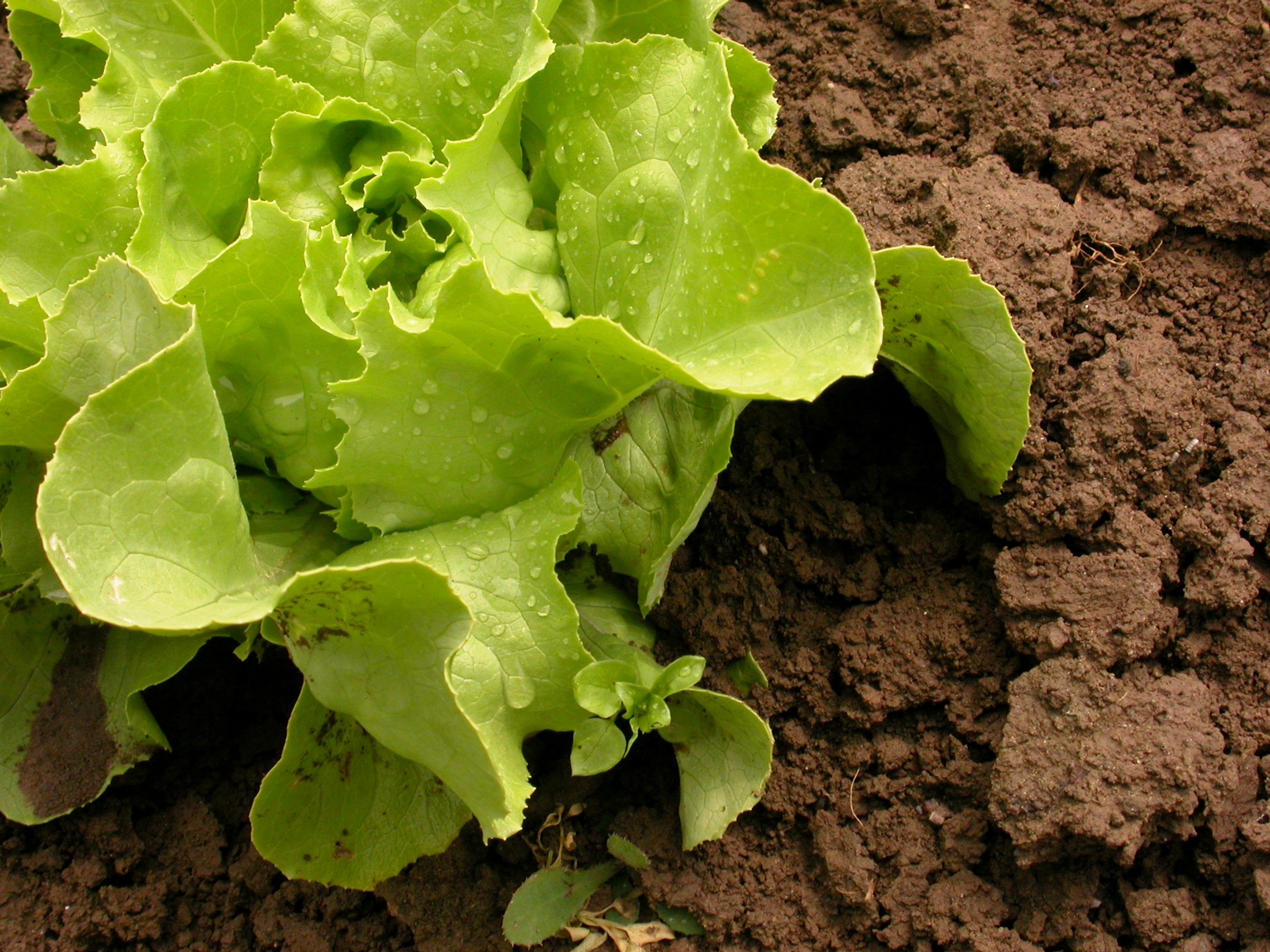
A lettuce plant being grown organically on a farm
Indoor farming in the cities are part of a narrative of ‘sustainable cities’ in which cities become self-sustaining ecological units. Unfortunately, those technologies are not integrated into the ecological web of the city, rather the opposite. They need to be sealed off even from the people; and the water used must be of premium quality. They can’t even use the rain falling in their roofs.
It is worthwhile looking back at the reasons for urban farming. Most cities have had some gardens within the city walls, and almost all of them, except for pure trading seaports have had a close relationship to the rural hinterland. In Paris in the 19th century and well into the 20th century, there was a substantial production of fruits and vegetables, employing 9,000 gardeners on 1,400 ha of land.[19] Farming in the cities had as much to do with using the cities’ waste as with the city as an outlet of production.
Most big cities had well developed systems for collecting human waste and bringing it back to the farm land, ‘the more the city stank the richer it was deemed to be’. In Gennervilliers, outside Paris, the first municipal sewage treatment plant in 1869 was based on recycling nutrients. It was a great success and farmers fought for the contracts and by 1900 there were 5,000 hectares irrigated by the sewage water.[20] When global markets became the main supplier of food to cities and artificial fertilizers became cheap, all these linkages disappeared as well as the link between the city and its surrounding rural areas.
We need to have realistic expectations of what can be produced in the city. In the semi-deserted and bankrupt city of Detroit, it is estimated that almost 5,000 acres could be allocated to urban farming. This could supply Detroiters with between one third to two thirds of the vegetables consumed and between one sixth to two fifths of the fruit. This seems impressive – but fruit and vegetables play a minor role in feeding people. The same area could perhaps give 10,000 tons of wheat, which sounds a lot, but equals the calorific needs of 30,000 people, just a few percentages of the population of Detroit. Other research shows similar results.[21]
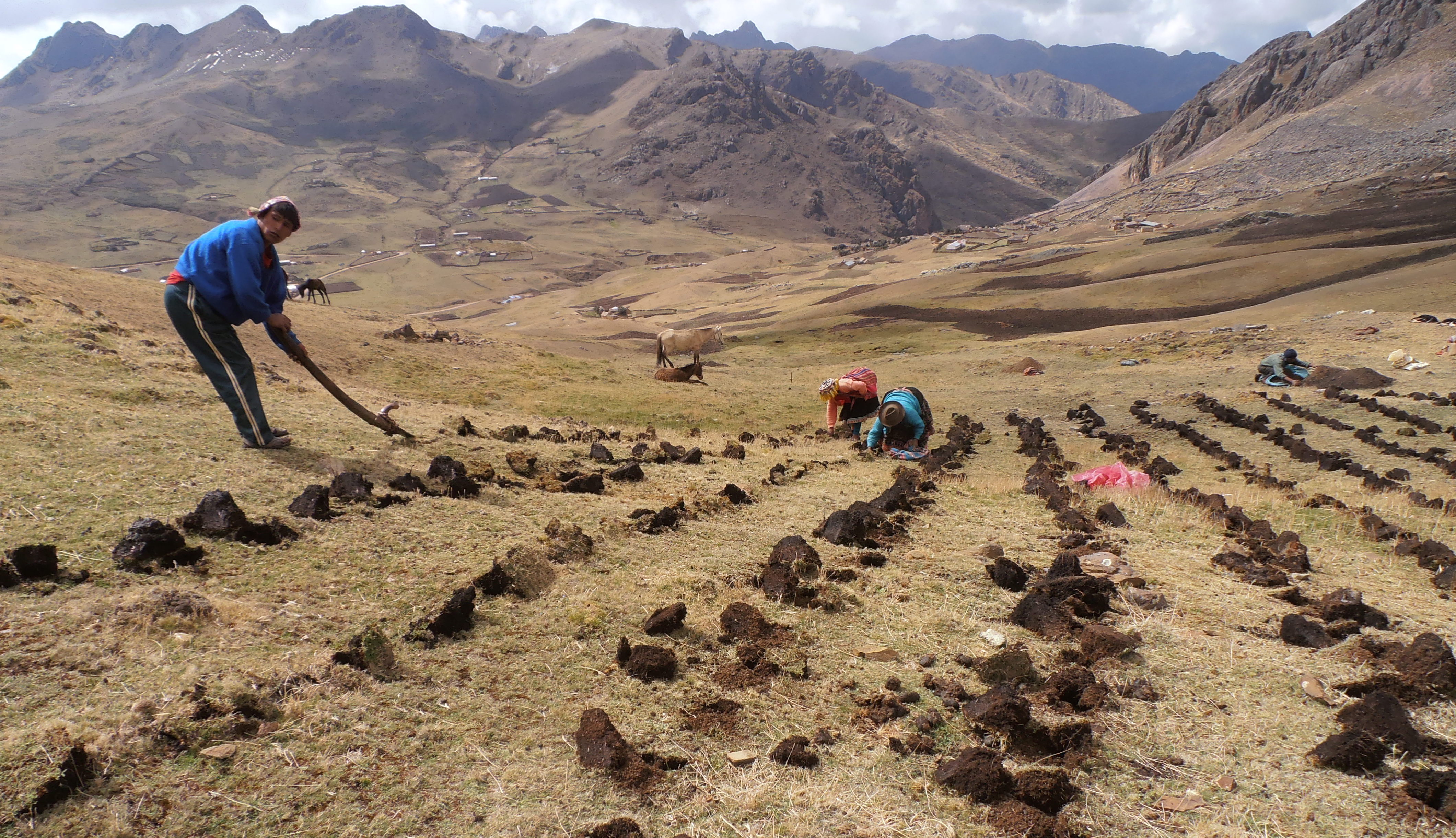
Farmers in Peru using their hands and a hoe to plant potatoes
While it is commendable to strive to reduce the ecological footprint of cities, some realism is called for. For their provisions and waste disposal, cities need forest, agricultural, marine, and wetland ecosystems on lands that are many hundred times the area of the city itself.[22] If we are serious about feeding the cities more locally, we should look more to the perimeters of the city and to the interplay between cities and their hinterland. It is here that there really is a potential to feed the cities.
Meanwhile, urban farming – with soil and animals – has a role to play in reviving community spirit and for recreation. It is also a good way to engage people in food production and in appreciating food quality. Despite the hype and attention given to urban farming in modern wealthy cities, most urban farming takes place in developing countries by poor people, using very simple technology and producing a lot more food than any vertical farms.
In general, the most-hyped ideas which are promoted in the media are often the least realistic alternatives. High-tech solutions inevitably attract attention, but mostly they stumble on practicalities or economics. The step from a theoretical possibility or even a prototype production to a commercially viable production is much bigger than most people seem to realize. The messages of the techno-optimists are both deceptive and dangerous as it makes people believe that most problems can be solved by technological innovation which in turn takes attention and resources away from other solutions. In essence we already have the technologies needed to feed the world’s population with healthy food in a sustainable way. The challenges are more social, economic, and political.
References:
[1] Rundgren, G. 2017: ’Syna vegoköttet’ 13 April 2017, http://tradgardenjorden.blogspot.se/2017/04/syna-vegokottet.html
[2] Gizmodo 2015: ’The Future Will Be Full of Lab Grown Meat’ http://gizmodo.com/the-future-will-be-full-of-lab-grown-meat-1720874704, 27 May 2016.
[3] Maastricht University 2015: ‘Introducing cultured meat’, cultured-beef.net/introducing 12 December 2015
[4] Quartz 2017: ’A startup figured out how to grow chicken meat without chickens—just from using their cells’, https://qz.com/934240/memphis-meats-a-silicon-valley-food-tech-company-has-figured-how-to-create-meatless-chicken/ March 16, 2017
[5] BBC 1986 : The Proteen Plant’ Doomsday Reloaded www.bbc.co.uk/history/domesday.
[6] Algae Industry Magazine 2012: ‘Low-cost algae production–is it finally with us?’ 13 May 2012 AlgaeIndustryMagazine.com.
[7] Jez, S. et. al. 2017: Comparative life cycle assessment study on environmental impact of oil production from micro-algae and terrestrial oilseed crops’, Bioresource Technology 2017 Sep;239:266-275
[8] Timmons, M., and P.W. Aho 1998: ’Comparison of aquaculture and broiler production systems’ Proceedings of the Second International Conference on Recirculating Aquaculture. G.S. Libey. M.B. Timmons (editors) Roanoke, Virginia.
[9] Teisl, M. F. 2011: ‘Environment and food consumption’ in The Oxford Handbook of the Economics of Food Consumption and Policy. Oxford Economic Handbooks.
[10] FAO 2014: The Contribution of Insects to Food Security, Livelihoods and the Environment 20 April 2014: www.fao.org.
[11] Jansson, A. and Berggren, Å.: 2015. Insects as Food, Swedish University of Agricultural Science
[12] FAO 2014: The Contribution of Insects to Food Security, Livelihoods and the Environment 20 April 2014. www.fao.org.
[13] Gericke, W. F.: 1940 The Complete Guide to Soilless Gardening Putnam.
[14] Time 1938: ‘Science: Hydroponics to wake’ Monday, 23 May 1938 http://content.time.com.
[15] Maximum Yield 2014: ’ A Beginner’s Guide to Calculating Garden Lighting Needs’ https://www.maximumyield.com/a-beginners-guide-to-calculating-garden-lighting-needs/2/1350 17 February 2014.
[16] World bank 2017: ’ Electric power consumption (kWh per capita)’ http://data.worldbank.org/indicator/EG.USE.ELEC.KH.PC 14 December 2017
[17] Based on industry data drawn from several web sites.
[18] Shiina, T., Hosokawa, D., Roy, P., Nakamura , N., Thammawong, M. and Orikasa, T. 2011. ‘Life cycle inventory analysis of leafy vegetables grown in two types of plant factories.’ Acta Hort. (ISHS) 919:115-122
[19] Atkins, P. J., P. Lummel and D. J. Oddy (editors) 2007: Food and the City in Europe since 1800 Ashgate.
[20] Steel, C. 2008: Hungry City. Chatto & Windus.
[21] Rundgren, G 2015: Global Eating Disorder. Regeneration
[22] Folke, Carl, et al. 1997: ’Ecosystem Appropriation by Cities.’ Ambio, vol. 26, no. 3, 1997, pp. 167–172. JSTOR, www.jstor.org/stable/4314576.


